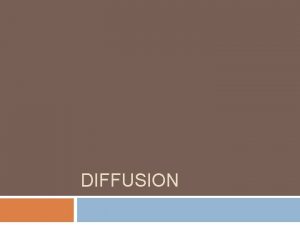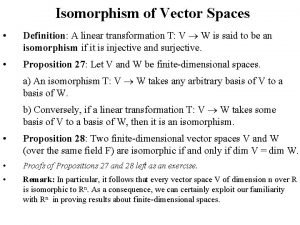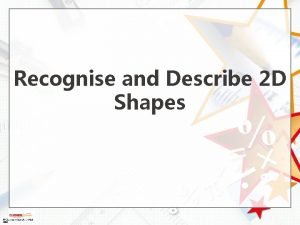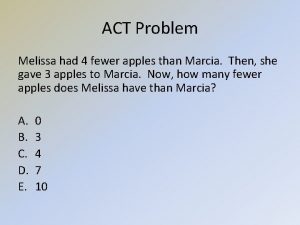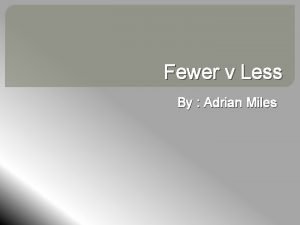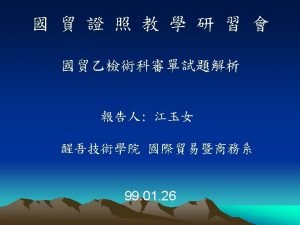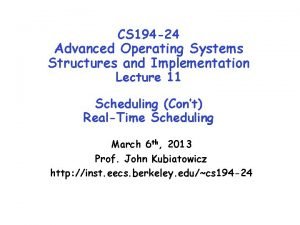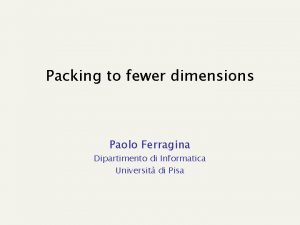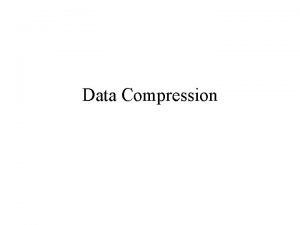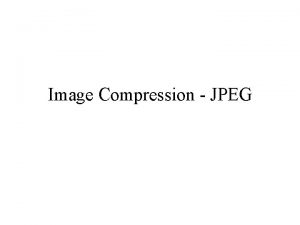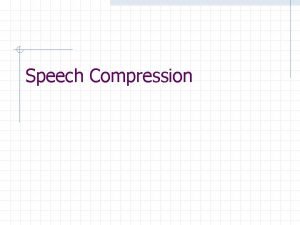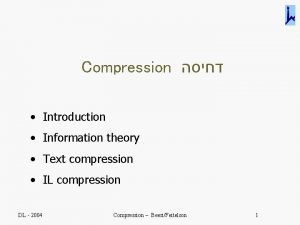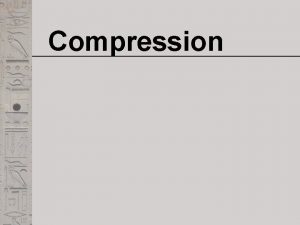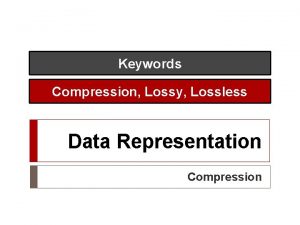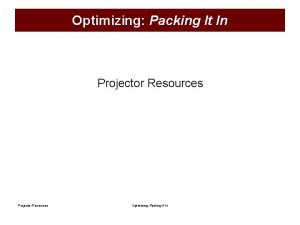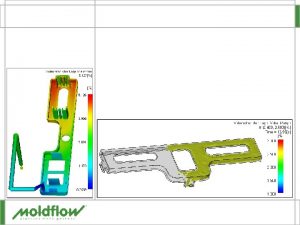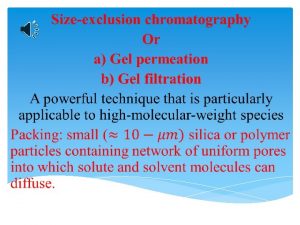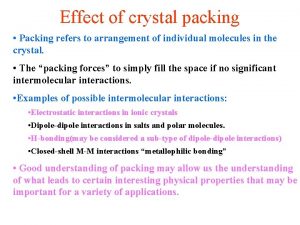Packing to fewer dimensions for space compression and





































- Slides: 37

Packing to fewer dimensions (for space compression and query speedup) Paolo Ferragina Dipartimento di Informatica Università di Pisa

Speeding up cosine computation n What if we could take our vectors and “pack” them into fewer dimensions (say 50, 000 100) while preserving distances? n n n Now, O(nm) to compute cos(d, q) for all n docs Then, O(km+kn) where k << n, m Two methods: n n Latent semantic indexing Random projection

Briefly n LSI is data-dependent n n Create a k-dim subspace by eliminating redundant axes Pull together “related” axes – hopefully n n car and automobile What about polysemy ? Random projection is data-independent n Choose a k-dim subspace that guarantees good stretching properties with high probability between any pair of points.

Sec. 18. 4 Latent Semantic Indexing courtesy of Susan Dumais

Notions from linear algebra n n n Matrix A, vector v Matrix transpose (At) Matrix product Rank Eigenvalues l and eigenvector v: Av = lv Example

Overview of LSI n Pre-process docs using a technique from linear algebra called Singular Value Decomposition n Create a new (smaller) vector space n Queries handled (faster) in this new space

Singular-Value Decomposition n Recall m n matrix of terms docs, A. n A has rank r m, n Define term-term correlation matrix T=AAt n T is a square, symmetric m m matrix n Let U be m r matrix of r eigenvectors of T Define doc-doc correlation matrix D=At. A n D is a square, symmetric n n matrix n Let V be n r matrix of r eigenvectors of D

A’s decomposition n n Given U (for T, m r) and V (for D, n r) formed by orthonormal columns (unit dot-product) It turns out that A = U S Vt n Where S is a diagonal matrix with the singular values (=square root of the eigenvalues of T=AAt ) in decreasing order. m n A = m r U r r S r n Vt

The case of r = 2 = = From Jure Leskovec’s slides (Stanford), this and next ones

The case of r=2 = =

7 5 k = projected space size r k

r=3





Dimensionality reduction n Fix some k << r, zero out all but the k biggest eigenvalues in S [choice of k is crucial] n n Denote by Sk this new version of S, having rank k Typically k is about 100, while r (A’s rank) is > 10, 000 document k k 0 = 0 k 0 r Ak Um x kr Sk Vkrt xx nn useless due to 0 -col/0 -row of Sk

Guarantee n Ak is a pretty good approximation to A: n n Relative distances are (approximately) preserved Of all m n matrices of rank k, Ak is the best approximation to A wrt the following measures: n min. B, rank(B)=k ||A-B||2 = ||A-Ak||2 = sk+1 n min. B, rank(B)=k ||A-B||F 2 = ||A-Ak||F 2 = sk+12+ sk+22+. . . + sr 2 n Frobenius norm ||A||F 2 = s 12+ s 22+. . . + sr 2













Interpret as another row in the matrix

This product U * S gives the projection of users to the 2 new dims, corresponding to the vectors v 1, v 2 of V matrix below


This is a new user that expresses preferences on-the-fly at query time d



Recap n c-th concept = c-th col of Uk n (which is m x k) Uk[i][c] = strength of association between c-th concept and i-th row (term/user/…) n Vtk[c][j] = strength of association between c-th concept and j-th column (document/movie/…) n n Projected query: q’ = q Vk n q’[c] = strenght of concept c in q Projected column (doc/movie): d’j = dj Vk n d’j [c] = strenght of concept c in dj
 How to write a resolution
How to write a resolution Distance decay vs time space compression
Distance decay vs time space compression Time space compression ap human geography example
Time space compression ap human geography example Examples of popular culture
Examples of popular culture Time space compression ap human geography
Time space compression ap human geography Strategic management chapter 6
Strategic management chapter 6 Left multiplication
Left multiplication Classroom
Classroom Efficient video classification using fewer frames
Efficient video classification using fewer frames Melissa has 3 fewer apples than marcia
Melissa has 3 fewer apples than marcia With fewer
With fewer Fact or opinion game
Fact or opinion game Expressways have fewer collisions than highways because
Expressways have fewer collisions than highways because Adrian miles
Adrian miles Invoice and packing list
Invoice and packing list Cyclic executive and bin packing
Cyclic executive and bin packing Cyclic executive and bin packing
Cyclic executive and bin packing Kontinuitetshantering i praktiken
Kontinuitetshantering i praktiken Novell typiska drag
Novell typiska drag Tack för att ni lyssnade bild
Tack för att ni lyssnade bild Ekologiskt fotavtryck
Ekologiskt fotavtryck Varför kallas perioden 1918-1939 för mellankrigstiden
Varför kallas perioden 1918-1939 för mellankrigstiden En lathund för arbete med kontinuitetshantering
En lathund för arbete med kontinuitetshantering Kassaregister ideell förening
Kassaregister ideell förening Personlig tidbok för yrkesförare
Personlig tidbok för yrkesförare Sura för anatom
Sura för anatom Förklara densitet för barn
Förklara densitet för barn Datorkunskap för nybörjare
Datorkunskap för nybörjare Tack för att ni lyssnade bild
Tack för att ni lyssnade bild Att skriva debattartikel
Att skriva debattartikel Autokratiskt ledarskap
Autokratiskt ledarskap Nyckelkompetenser för livslångt lärande
Nyckelkompetenser för livslångt lärande Påbyggnader för flakfordon
Påbyggnader för flakfordon Lufttryck formel
Lufttryck formel Svenskt ramverk för digital samverkan
Svenskt ramverk för digital samverkan Jag har nigit för nymånens skära text
Jag har nigit för nymånens skära text Presentera för publik crossboss
Presentera för publik crossboss Argument för teckenspråk som minoritetsspråk
Argument för teckenspråk som minoritetsspråk

